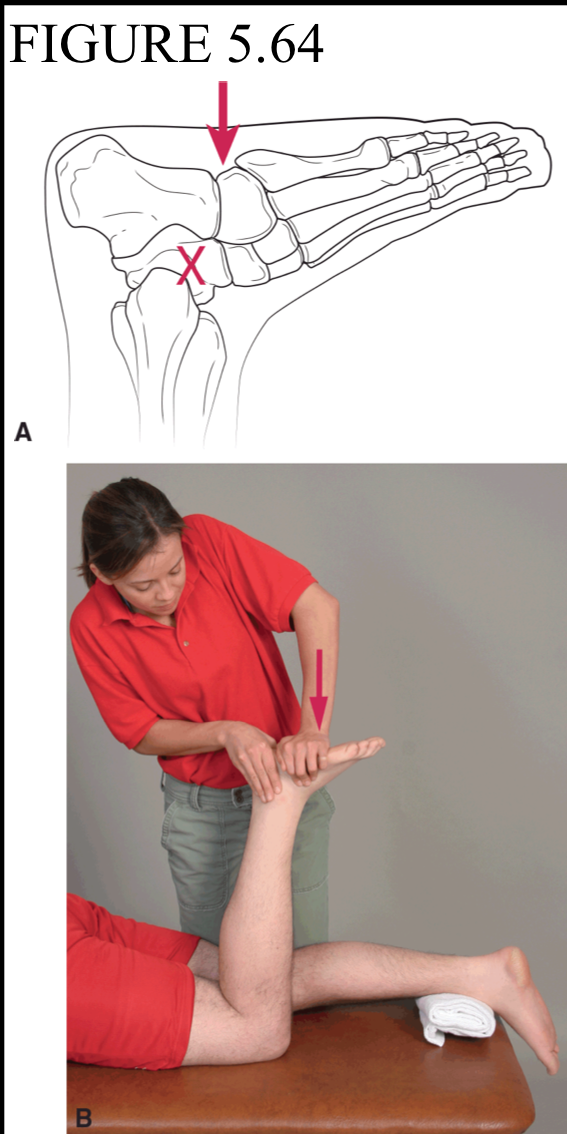Lower Extremity Joint Mobilization
1/16
There's no tags or description
Looks like no tags are added yet.
Name | Mastery | Learn | Test | Matching | Spaced |
|---|
No study sessions yet.
17 Terms
Hip Joint Distraction
Patient supine. Using the belt, create an X around the patients ankle and around bottom of your bum. Place hands underneath the belt to grasp the ankle. Put the leg into 30-30-30 and pull out to perform the distraction. Shift weight into the belt
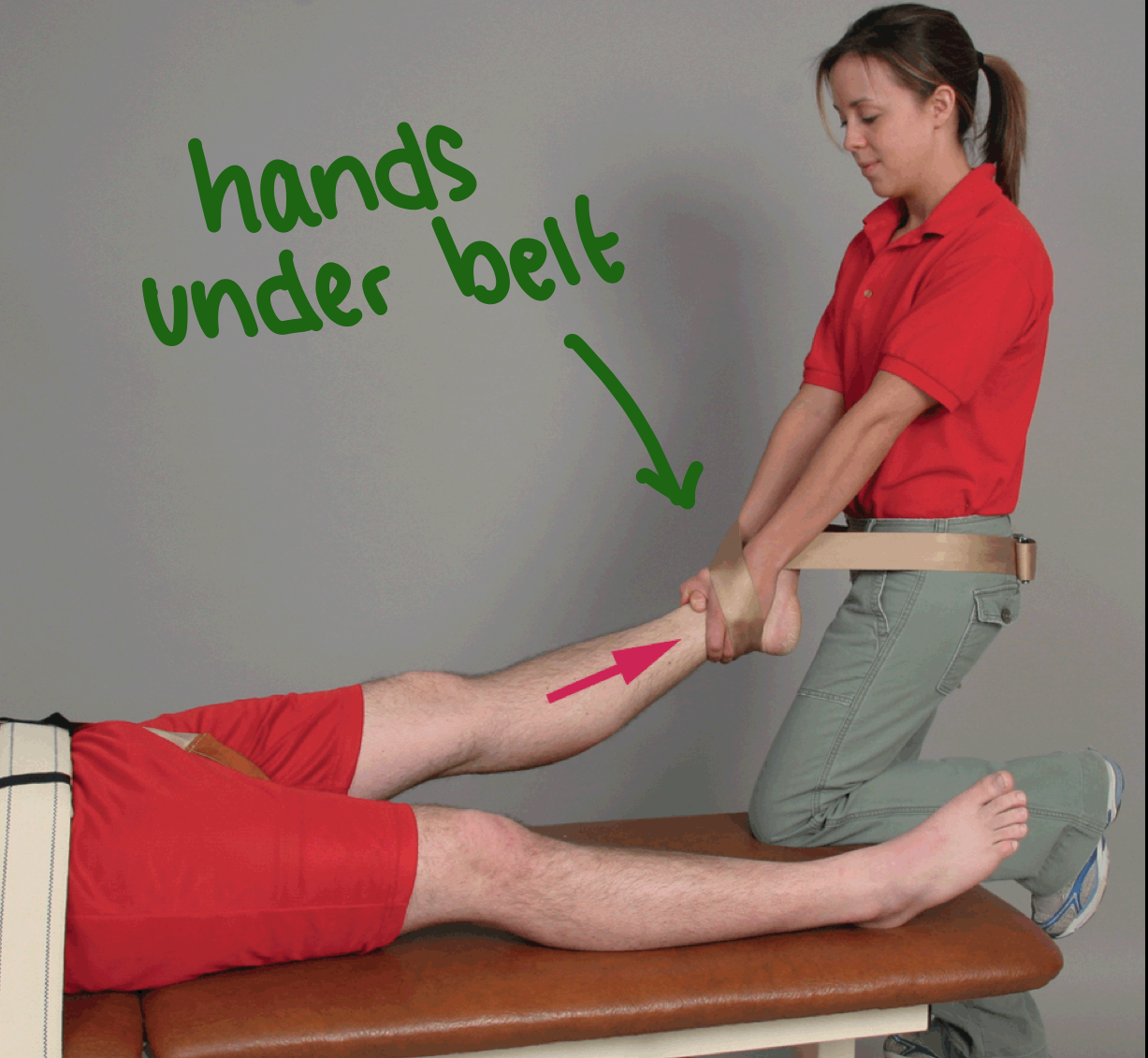
Hip Joint Posterior Glide
What help with?
Patient supine and hips close to the edge of the table. Place the belt underneath the treatment leg and sling it around your shoulder to support the leg up. The patient will hold their other knee to their chest. Supporting the leg, push down with the palm of your hand on their femoral head (straight from greater trochanter)
Flexion and IR
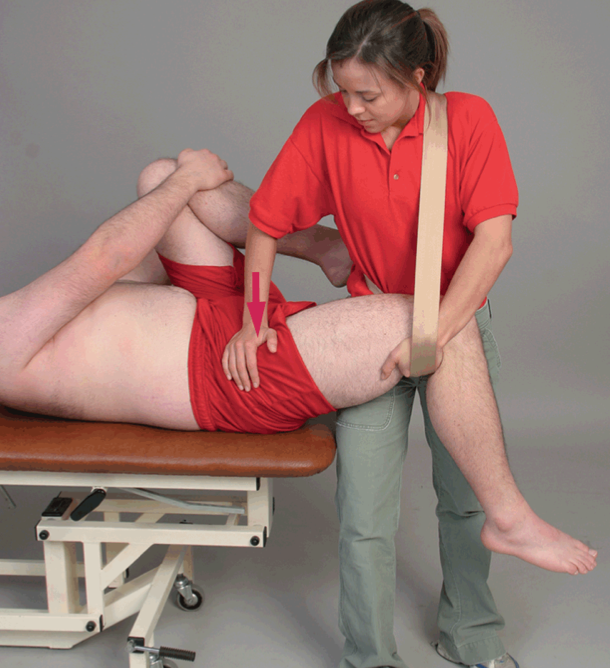
Hip Joint Anterior Glide
What help with?
Patient prone and hanging off table (hips almost off). One leg they can use to stand. The treatment leg wrap a belt under the thigh and sling it around your shoulder to support and hold up the leg. Push down on femoral head for anterior glide. (make sure their back is not hyperextended by adjusting the table as needed)
Extension and ER
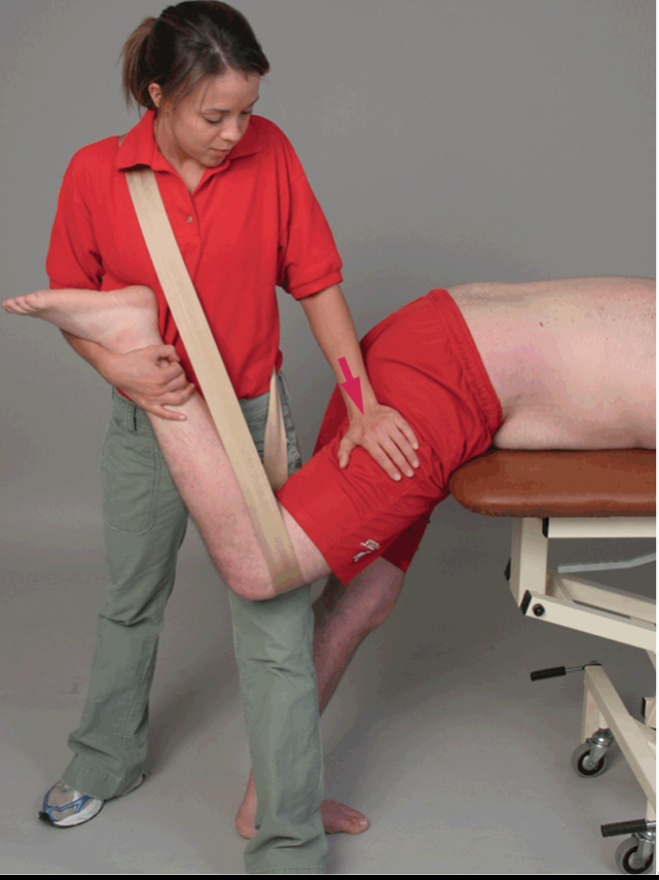
Tibiofemoral Joint Distraction
Patient seated with legs hanging off table. Wrap both hands around the distal head of the ankle/tibia, just superior to the malleoli. Pull down for the distraction.
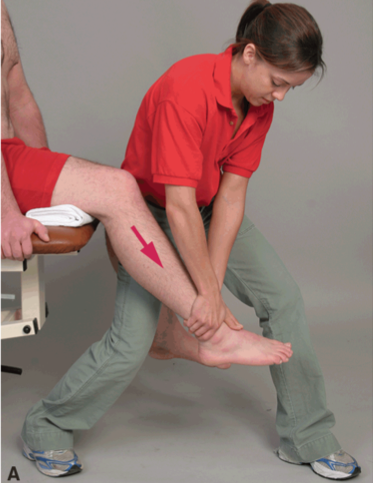
Tibiofemoral Joint Posterior Glide-Drawer
What help with?
Patient supine. Bend their knee slightly. Grasp hand around the knee. focusing on the tibia with the palms. Push down to create a posterior force.
Flexion
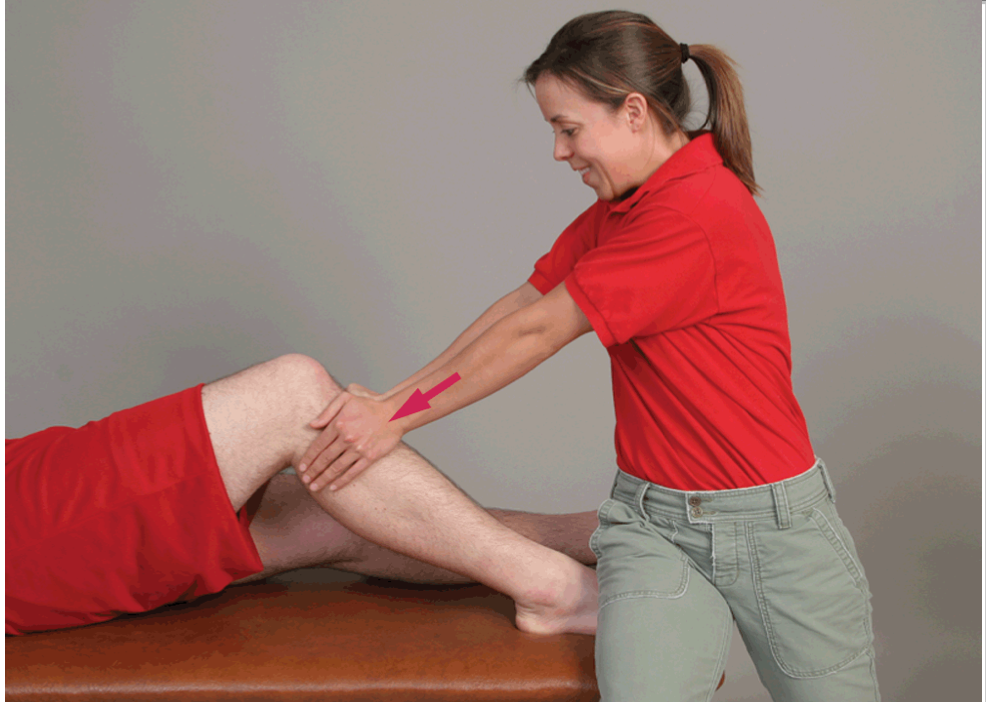
Tibiofemoral Joint Posterior Glide-Sitting
Patient seated legs hanging off. Extend the treatment knee slightly. Hold bottom leg at ankle for support and push force at the head of the tibia. (can also perform a slight distraction by pulling down at the ankle)
Flexion

Tibiofemoral Joint Anterior Glide
What help with?
Patient prone. Place a towel under the top of the knee. Flex the knee slightly and support the weight by holding inside of ankle. Push down on the tibia using palm of hand to create the anterior force.
Extension
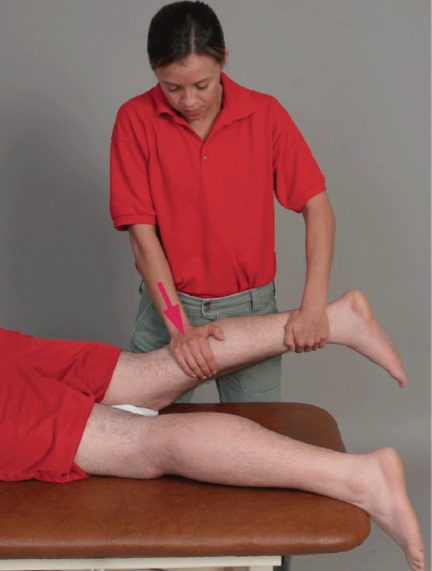
Patellofemoral joint glides
What help with?
Patient laying supine, knees straight. Can move the patella distal, proximal, medial and lateral.
(Patella moves up = helps extension)
(Patella moves down = helps flexion)
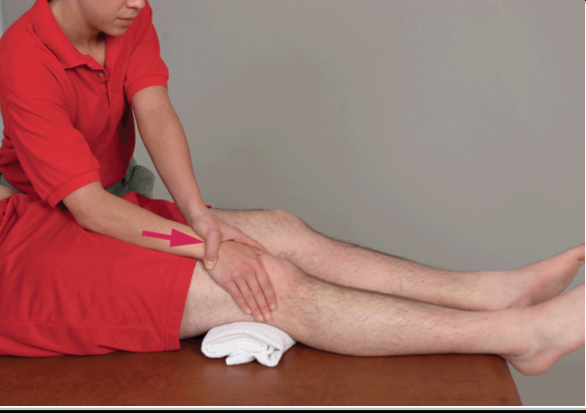
Proximal Tibiofibular Joint Anterior Glide Side Lying
Patient side lying facing away. Top leg will cross over the bottom, the knee resting on a towel. Wrap hands around the proximal head of the knee, pushing the tibial head outwards to create an anterior force.
Mobilizing the proximal fibula
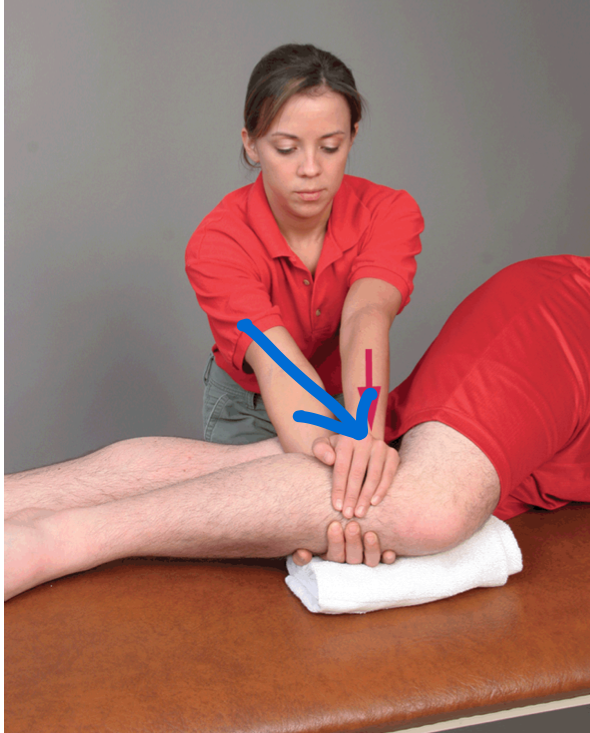
Distal Tibiofibular Posterior Glide (Ankle Mortoise)
What help with?
Patient supine with ankle resting on a towel. Grip the ankle barely above the malleoli. Push down on the fibula (outside) with palm of down.
Dorsiflexion
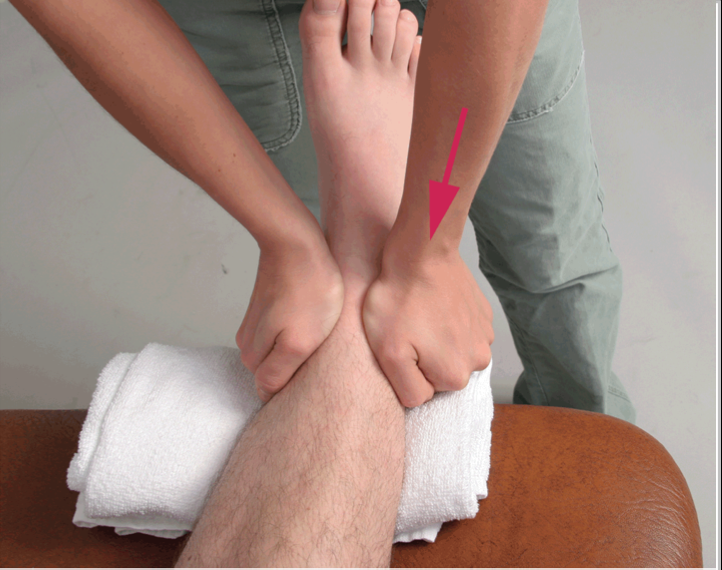
Talocrural Joint Distraction
Patient supine. Belt under the table and around the lower leg. Heel resting on a towel. Grasp the midfoot and pull out towards you, shifting your weight back.
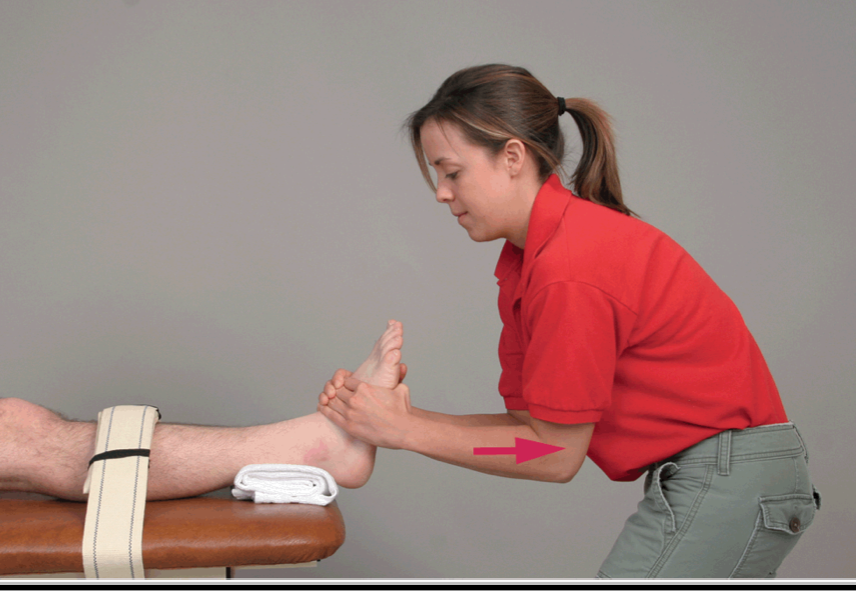
Talocrural Joint Posterior Glide
What help with?
Patient supine with lower leg belted to the table. Heel resting on a towel. Grab patients ankle to stabilize, and the other hand will grasp the middle of the foot. Push down to create posterior glide.
Dorsiflexion
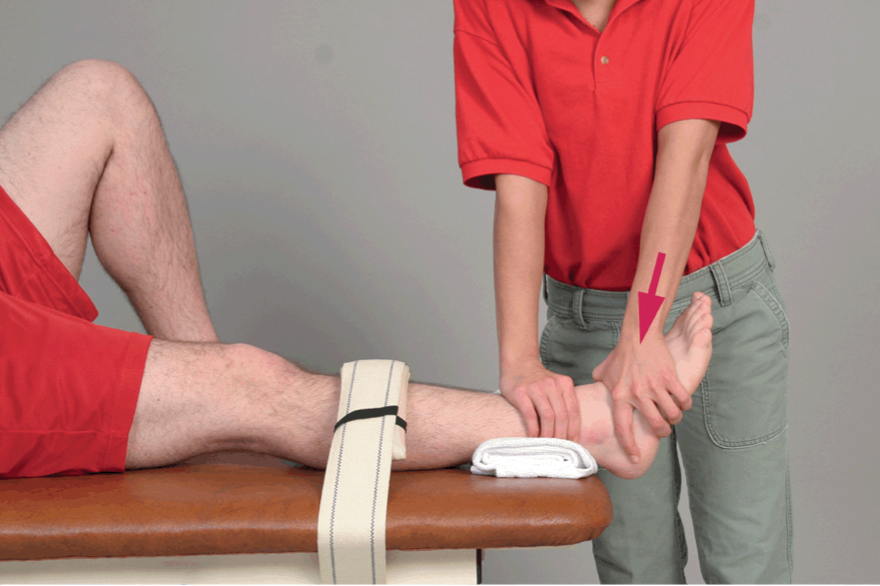
Talocrural Joint Anterior Glide
What help with?
Patient prone lower leg belted to table. Ankle underneath a towel and foot hanging off table. Stabilize bottom patient midfoot in your hand by grasping at ankle line. Top hand gripping the heel and applying downward force.
Plantarflexion
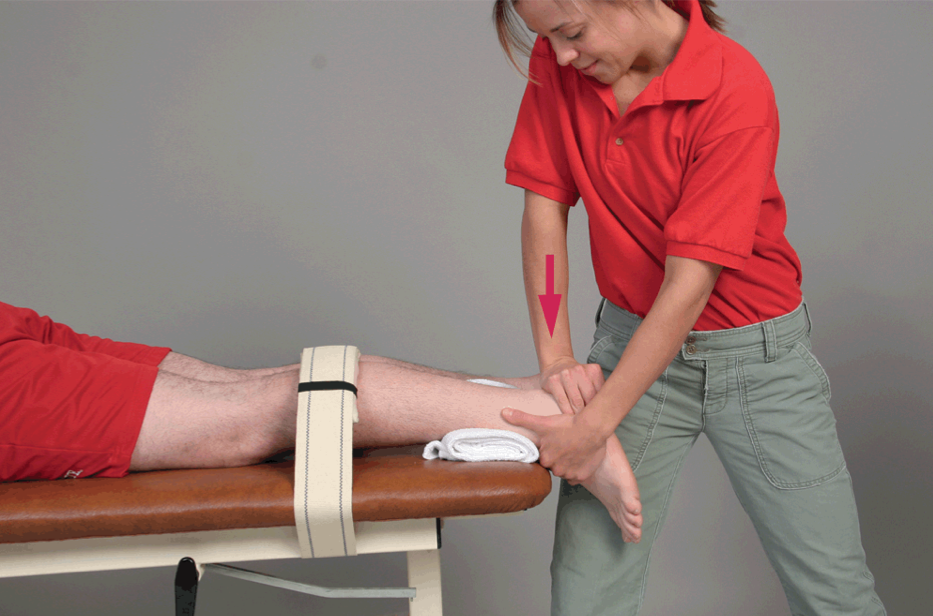
Subtalar Joint Distraction
Patient supine. Lower leg belted to table and towel under the ankle. foot off the table. Slight ER of the foot, and have it against your thigh. Grab the top of the ankle for support, and the other hand will grab the heel and pull directly outward.
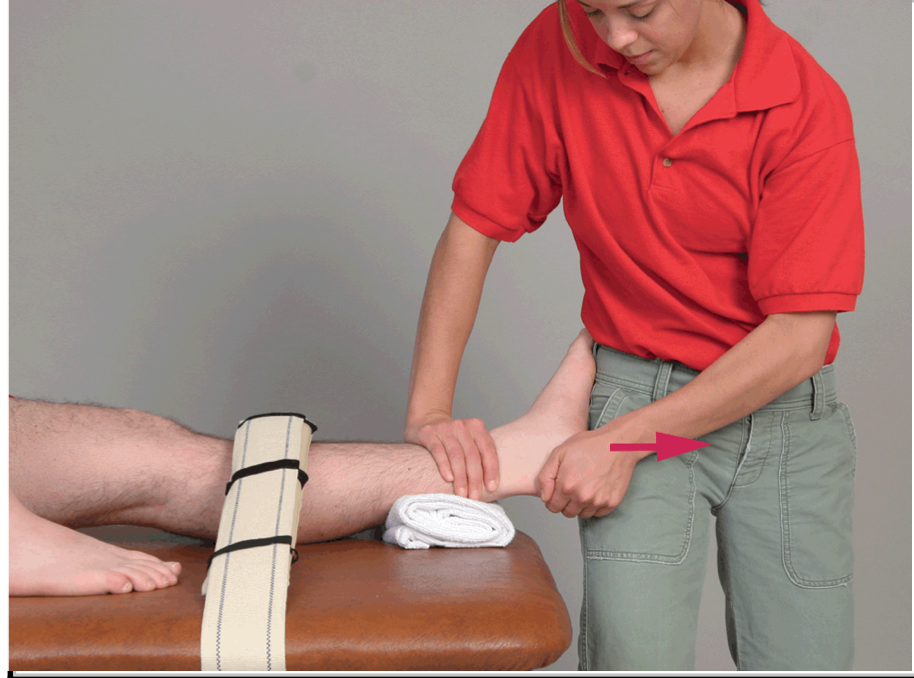
Subtalar Joint Lateral and Medial Glide
What help with?
Patient prone with lower leg belted to the table. Top of foot resting on a towel. Therapist standing on inside of foot. One hand on bottom wrapped around the top of mid foot and other hand around the heel with palm on lateral edge of heel. Push the force outward to create a lateral glide, inward for medial glide (stand outside foot).
Lateral - Inversion
Medial - Eversion
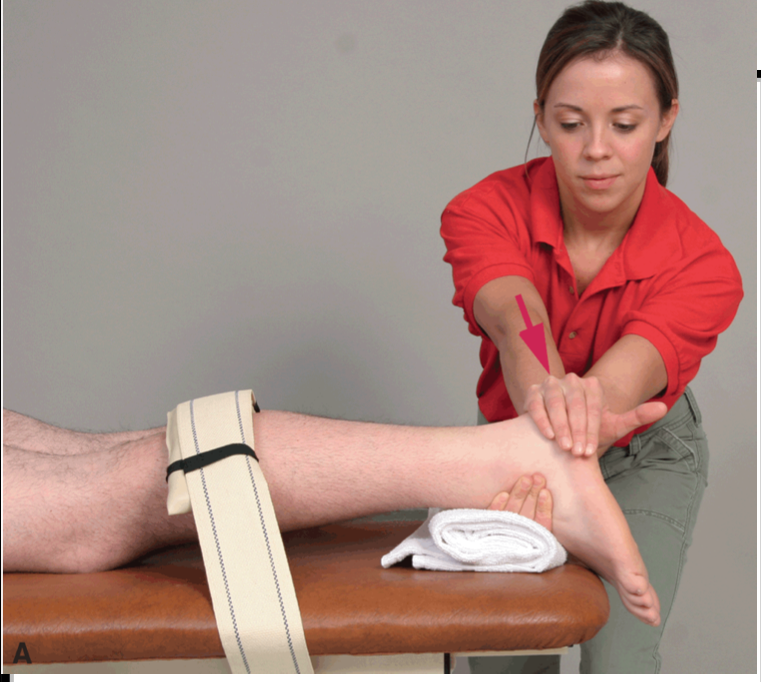
Plantar glide of distal tarsal bone on a stablizied proximal bone
What help improve?
Patient seated with their foot resting on your lap. (therapist seated on outside of leg). Wrap hands around the inside ankle to stabilize and the other hand on the inside top of the foot. (Feel for the bone right underneath the big toe metatarsal) Apply force downward.
Supination and improve arch
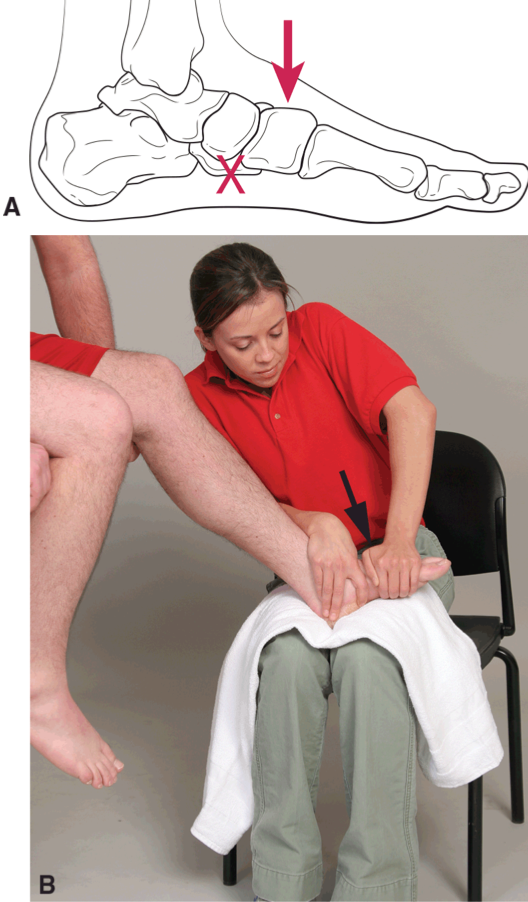
Dorsal glide of distal tarsal on proximal tarsal
What help improve?
Patient prone with feet hanging off table. Patient knee flexed and foot flat. One hand around the heel and the other hand on top of foot, with thumb on the cuneiform bone. Fell the 5th metatarsal and work down until you feel the bone. Push down to apply dorsal glide.
Pronation
